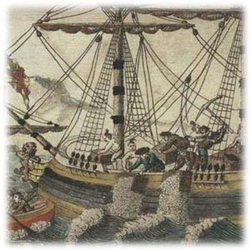
I. Activating Prior Knowledge
According to the Google search engine, propaganda is “information of a biased or misleading nature, used to promote or publicize a particular cause or point of view.” In this activity, you are going to be looking at propaganda that espoused the idea of revolution.
II. Setting A Purpose for Reading
As you look at the following pieces of propaganda, try to identify the perspective of the artist or creator. What, if any, of the information would be considered either biased or misleading?
III. Reading the Text (Read, Re-read, and Read Again)
Boston Tea Party
Source: http://king.portlandschools.org/files/onexpedition/expeditionproducts/sparks/files/sparks/teaparty/teaparty.htm
Stop! Can you answer these questions? If not, go back and re-read the passage. What is taking place in this picture? What is the perspective of the artist? How are liberty, freedom, and equality being expressed in this picture?
According to the Google search engine, propaganda is “information of a biased or misleading nature, used to promote or publicize a particular cause or point of view.” In this activity, you are going to be looking at propaganda that espoused the idea of revolution.
II. Setting A Purpose for Reading
As you look at the following pieces of propaganda, try to identify the perspective of the artist or creator. What, if any, of the information would be considered either biased or misleading?
III. Reading the Text (Read, Re-read, and Read Again)
Boston Tea Party
Source: http://king.portlandschools.org/files/onexpedition/expeditionproducts/sparks/files/sparks/teaparty/teaparty.htm
Stop! Can you answer these questions? If not, go back and re-read the passage. What is taking place in this picture? What is the perspective of the artist? How are liberty, freedom, and equality being expressed in this picture?
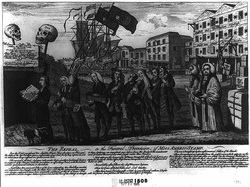
The Repeal, of the Funeral Procession of Miss Americ-Stamp
Source:http://www.loc.gov/pictures/resource/cph.3a05303/
Stop! Can you answer these questions? If not, go back and re-read the passage. What is taking place in this picture? What is the perspective of the artist? How are liberty, freedom, and equality being expressed in this picture?
Source:http://www.loc.gov/pictures/resource/cph.3a05303/
Stop! Can you answer these questions? If not, go back and re-read the passage. What is taking place in this picture? What is the perspective of the artist? How are liberty, freedom, and equality being expressed in this picture?
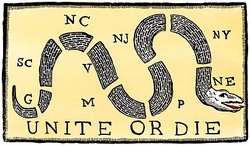
Unite or Die!
Source:http://levechad.blogspot.com/2010/06/unite-or-die.html
Source:http://levechad.blogspot.com/2010/06/unite-or-die.html
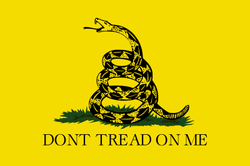
Don’t Tread on Me!
Source:http://blogs.venturacountystar.com/ingemusings/archives/2010/07/ventura-county-1.html
Stop! Can you answer these questions? If not, go back and re-read the passage. What is taking place in this picture? What is the perspective of the artist? How are liberty, freedom, and equality being expressed in this picture?
Source:http://blogs.venturacountystar.com/ingemusings/archives/2010/07/ventura-county-1.html
Stop! Can you answer these questions? If not, go back and re-read the passage. What is taking place in this picture? What is the perspective of the artist? How are liberty, freedom, and equality being expressed in this picture?
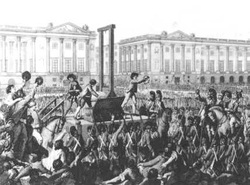
La Marseillaise – French National Anthem
The French National Anthem was written in 1792 by Claude Joseph Rouget de Lisle as a rallying call of the French Revolution.
1. Arise you children of our motherland,
Oh now is here our glorious day!
Over us the bloodstained banner
Of tyranny holds sway!
Of tyranny holds sway!
Oh, do you hear there in our fields
The roar of those fierce fighting men?
Who came right here into our midst
To slaughter sons, wives and kin,
Your country
To arms, oh citizens!
Form up in serried ranks!
March on, march on!
And drench our fields
With their tainted blood!
2. Supreme devotion to our Motherland,
Guides and sustains avenging hands,
Liberty, oh dearest Liberty,
Come fight with your shielding bands,
Come fight with your shielding bands!
Beneath our banner come, oh Victory,
Run at your soul-stirring cry.
Oh come, come see your foes now die,
Witness your pride and our glory.
To arms, oh citizens!
Form up in serried ranks!
March on, march on!
And drench our fields
With their tainted blood!
Source: Stearns, Perter N., Gosch, Stephen, S., & Erwin P. Grieshaber. Documents in World History: Volume 2 – The Modern Centuries: From 1500 to the Present. New York: Pearson, 2009, p. 132.
Stop! Can you answer these questions? If not, go back and re-read the passage. What is being described in this song? What is the perspective of the song writer? How are liberty, freedom, and equality being expressed in the song?
Execution of Louis XVI
Source: http://www.theculturewatch.com/the-french-revolution
The French National Anthem was written in 1792 by Claude Joseph Rouget de Lisle as a rallying call of the French Revolution.
1. Arise you children of our motherland,
Oh now is here our glorious day!
Over us the bloodstained banner
Of tyranny holds sway!
Of tyranny holds sway!
Oh, do you hear there in our fields
The roar of those fierce fighting men?
Who came right here into our midst
To slaughter sons, wives and kin,
Your country
To arms, oh citizens!
Form up in serried ranks!
March on, march on!
And drench our fields
With their tainted blood!
2. Supreme devotion to our Motherland,
Guides and sustains avenging hands,
Liberty, oh dearest Liberty,
Come fight with your shielding bands,
Come fight with your shielding bands!
Beneath our banner come, oh Victory,
Run at your soul-stirring cry.
Oh come, come see your foes now die,
Witness your pride and our glory.
To arms, oh citizens!
Form up in serried ranks!
March on, march on!
And drench our fields
With their tainted blood!
Source: Stearns, Perter N., Gosch, Stephen, S., & Erwin P. Grieshaber. Documents in World History: Volume 2 – The Modern Centuries: From 1500 to the Present. New York: Pearson, 2009, p. 132.
Stop! Can you answer these questions? If not, go back and re-read the passage. What is being described in this song? What is the perspective of the song writer? How are liberty, freedom, and equality being expressed in the song?
Execution of Louis XVI
Source: http://www.theculturewatch.com/the-french-revolution
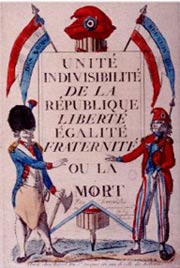
Liberty, Equality, Fraternity
Source: http://www.diplomatie.gouv.fr/en/france/institutions-and-politics/the-symbols-of-the-republic/article/liberty-equality-fraternity
Stop! Can you answer these questions? If not, go back and re-read the passage. What is being described in these pictures? What is the perspective of the artist? How are liberty, freedom, and equality being expressed in the pictures? What do the symbols suggest?
Source: http://www.diplomatie.gouv.fr/en/france/institutions-and-politics/the-symbols-of-the-republic/article/liberty-equality-fraternity
Stop! Can you answer these questions? If not, go back and re-read the passage. What is being described in these pictures? What is the perspective of the artist? How are liberty, freedom, and equality being expressed in the pictures? What do the symbols suggest?
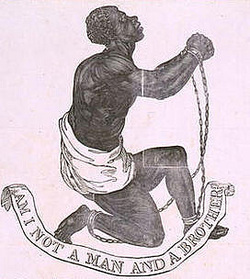
Haiti Revolution
Source: http://www.glogster.com/keego612/haitian-revolution-phase-1/g-6mfgs16dlgilk2ab4oc5ca0?old_view=True
Source: http://www.glogster.com/keego612/haitian-revolution-phase-1/g-6mfgs16dlgilk2ab4oc5ca0?old_view=True
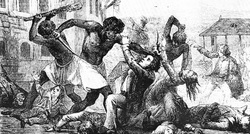
Haitian Revolution Begins with a Slave Revolt
Source: http://www.augustine.com/history/black_history/jorge_biassou/
Stop! Can you answer these questions? If not, go back and re-read the passage. What is being described in these pictures? What is the perspective of the artist? How are liberty, freedom, and equality being expressed in the pictures? What do the symbols suggest?
Source: http://www.augustine.com/history/black_history/jorge_biassou/
Stop! Can you answer these questions? If not, go back and re-read the passage. What is being described in these pictures? What is the perspective of the artist? How are liberty, freedom, and equality being expressed in the pictures? What do the symbols suggest?
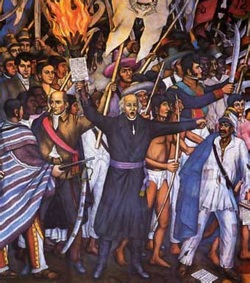
Hidalgo
Source: http://www.remezcla.com/2011/latin/el-grito-de-dolores-mexican-independence/
Stop! Can you answer these questions? If not, go back and re-read the passage. What is being described in these pictures? What is the perspective of the artist? How are liberty, freedom, and equality being expressed in the pictures? What do the symbols suggest?
IV. Personal Reflection - Respond to the following questions in your blog. Be sure to include quotes from the text to support your response.
Part 1 Response - Why were pictures and songs used to convey the message of revolution? If you were a revolutionary leader, which of the following would be the best way of communicating the idea of revolution to the masses: essays, letters, public speeches, slogans and pictures, music, books, cartoons, or an idea of your own? Explain your choice.
Part 2 Response – Select one of the pictures or song and explain why it should be considered propaganda. Give evidence from your selection to support your response.
V. Peer Reflection – Read three classmates’ reflections and respond to what they have written.
Source: http://www.remezcla.com/2011/latin/el-grito-de-dolores-mexican-independence/
Stop! Can you answer these questions? If not, go back and re-read the passage. What is being described in these pictures? What is the perspective of the artist? How are liberty, freedom, and equality being expressed in the pictures? What do the symbols suggest?
IV. Personal Reflection - Respond to the following questions in your blog. Be sure to include quotes from the text to support your response.
Part 1 Response - Why were pictures and songs used to convey the message of revolution? If you were a revolutionary leader, which of the following would be the best way of communicating the idea of revolution to the masses: essays, letters, public speeches, slogans and pictures, music, books, cartoons, or an idea of your own? Explain your choice.
Part 2 Response – Select one of the pictures or song and explain why it should be considered propaganda. Give evidence from your selection to support your response.
V. Peer Reflection – Read three classmates’ reflections and respond to what they have written.
 RSS Feed
RSS Feed